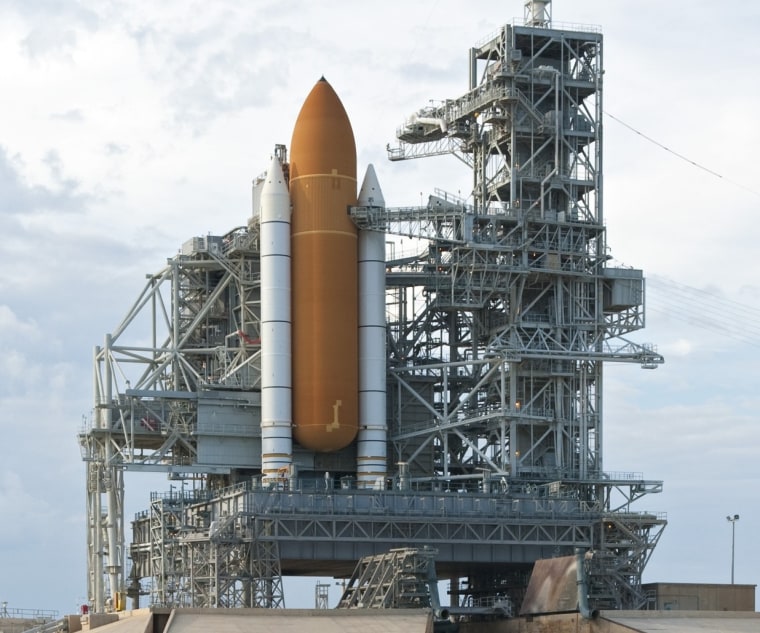Launch-pad technicians checked six bolts on one of the shuttle Discovery's fuel lines overnight — and discovered that the leak they had previously detected was no longer leaking, NASA said Tuesday.
The small leak, located on a flange where propellant lines meet, had the potential of holding up Discovery's planned Nov. 1 launch to the International Space Station.
Engineers had drawn up a repair plan, with tightening the bolts on the flange as a first step. But when the overnight crew checked the bolts, they found that the bolts already had the proper amount of torque. The leak may have been resolved when the pressure in the lines was adjusted, with the effect of seating the system's internal seals correctly.
The leak involved seepage of toxic monomethyl hydrazine fuel from the plumbing in one of the shuttle's orbital maneuvering system pods, or OMS pods. The OMS thrusters are used during flight for on-orbit course changes.
The launch team will conduct further testing to make sure the problem doesn't recur. NASA managers are due to set the shuttle's official launch date at a flight readiness review next Monday. Engineers expect the issue to be resolved by then.
Next month's STS-133 mission is scheduled to be Discovery's last flight. The shuttle's six-person crew is to deliver tons of supplies and equipment to the space station, including a module that will be permanently attached to the complex as an extra storage room.
The shuttle Endeavour is due to take the flight after Discovery's, and one last mission is expected to be flown next summer, using the shuttle Atlantis. Then all three shuttles are to be retired and put in museums. The Smithsonian Institution's National Air and Space Museum has already called dibs on Discovery.
After the shuttle fleet's retirement, the space station is to be resupplied by Russian, European and Japanese transports, as well as commercial U.S. spaceships that are currently under development.
This report includes information from The Associated Press and NBC News' Jay Barbree.
